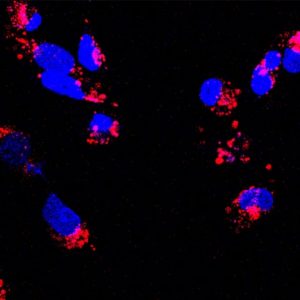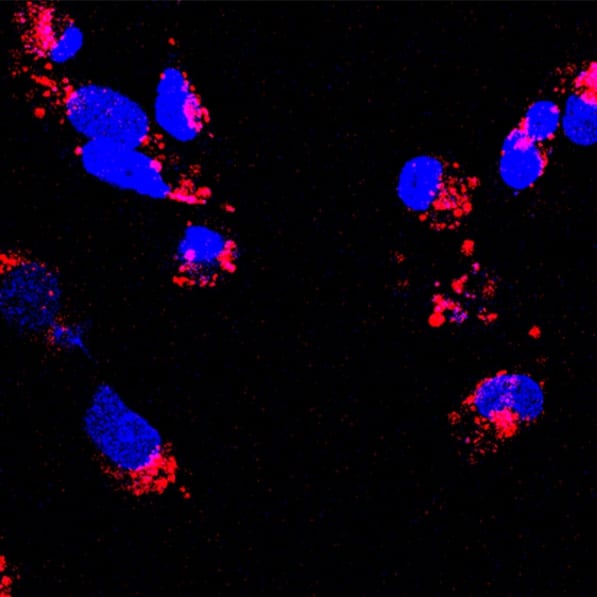Natural biological entities have been highly successful in fabricating nanoscale structures and functional systems, leading to scientific exploration of biologically inspired strategies for materials design. In particular, protein-based materials can combine natural properties, structural elements, and biologically reactive sites to obtain self-assembled nanoarchitectures with applications including tissue engineering, nanomaterials synthesis, and drug delivery. However, the functionality of these materials can be limited by the locations or absence of specific chemical conjugation sites.

Confocal laser scanning microscopy images of the protein-based nanoparticles incubated with breast cancer cells.
To circumvent this limitation, an investigation by Ren et al., at the University of California, Irvine, implemented a novel, non-covalent strategy to attach guest molecules into a protein-based nanocapsule. Their biomimetic inspiration was multi-drug efflux transporters, which bind a remarkably broad range of structurally-divergent molecules using phenylalanine, a hydrophobic amino acid. Through protein engineering, the team introduced targeted non-native phenylalanines into the hollow cavity of a caged protein scaffold.
The transformed nanoparticles enabled the antitumor drug doxorubicin to bind to the cavity at high loading capacities. These drug-protein complexes could subsequently be applied to induce death in breast cancer cells. Significantly, this work demonstrates a generalized strategy to engineer binding domains within protein-based materials that does not rely on conventional chemical coupling, thus extending the potential functionality of such materials.
Source: University of California, Irvine

















